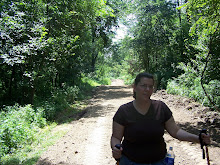
Growing up as the daughter of a pathologist has its benefits. I'm far more familiar with some of the medical terminology than I would have been otherwise. Most of us kids have a much stronger stomach than most of the people we know since dinner conversations often started around what Dad had cut up that day. Take your children to work day was a lot more fun (What's that Dad? Oh that's an appendix. Cool!!!). And one of the biggest benefits is that most of us kids have picked up my father's occasionally morbid sense of humor. I love dark humor and a good death joke.
So Stiff: The Curious Lives of Human Cadavers was right up my alley. Mary Roach's brilliant book is both informative and entertaining. The book is about death and what can happen to our bodies after death. As Mary is quick to point out, this is not a book about dying. There is nothing funny or interesting about dying. This is about what happens to those bodies that get donated to science. Or what could happen. The most common usage for cadavers is of course the Gross Anatomy labs. I remember listening to my brother talk about his time spent with his body. Mary talks about the respect and dignity that is most often showed to these bodies. But it is not the only place that a cadaver can end up.
The book discusses how some cadavers are used for plastic surgery practice, how some can be used to study forensic science (most notably the University of Tennessee's Body Farm), and some are used as crash test dummies. Mary discusses a new group that are attempting to get people to compost their bodies after death. She talks about the standard embalming practices, cremation, and even a new practice that would liquefy bodies. She talks with respect about beating-heart donors, whose organs to on to save multiple lives at a time. This of course is alongside a chapter on the uses of human body parts as medicine in olden days. The book mixes current practices with the history of cadaver usage. She even discusses the areas where bodies could be used but most often are not, like munitions research. That chapter was very hard for me since most of those jobs sadly fall to living animals.
In fact it was interesting that by the time I finished this book, even knowing all the places that my body could end up, I was ready to donate my remains to science. I've long been an organ donor but this just showed me all the wonderful ways in which a body can be useful after death. The book was fascinating and oftentimes funny. The historical perspective gave me a glimpse at how cadavers have provided some of the greatest advances in medicine and safety. A wonderful read and I'm looking forward to picking up Mary's other books, Spook (about science and the afterlife) and Bonk (about the mixing of science and sex). A little less morbid but I'm sure just as interesting.


2 comments:
Bonk!
I'm totally getting that one.
It's already on my to read list. Should be great.
Post a Comment